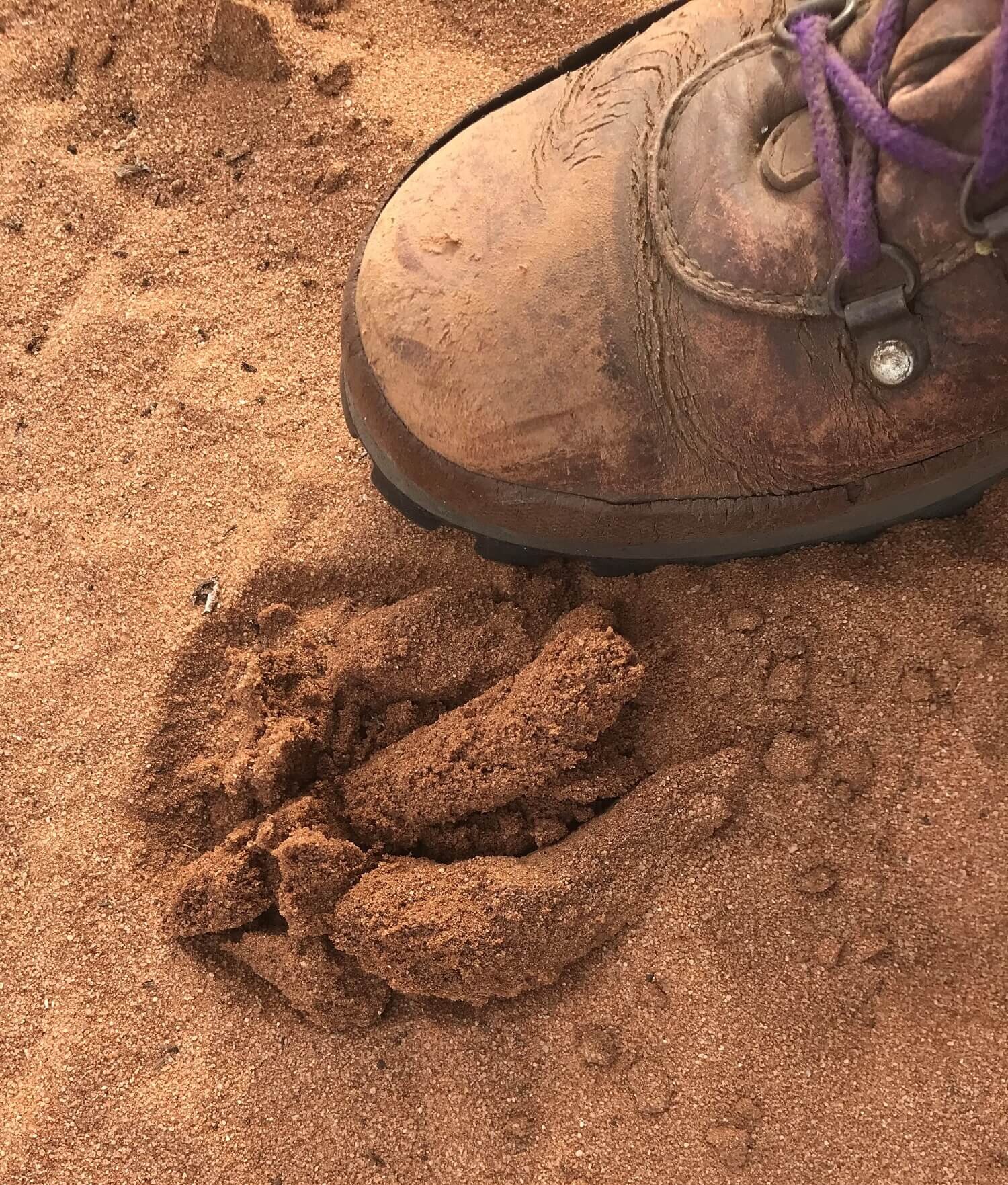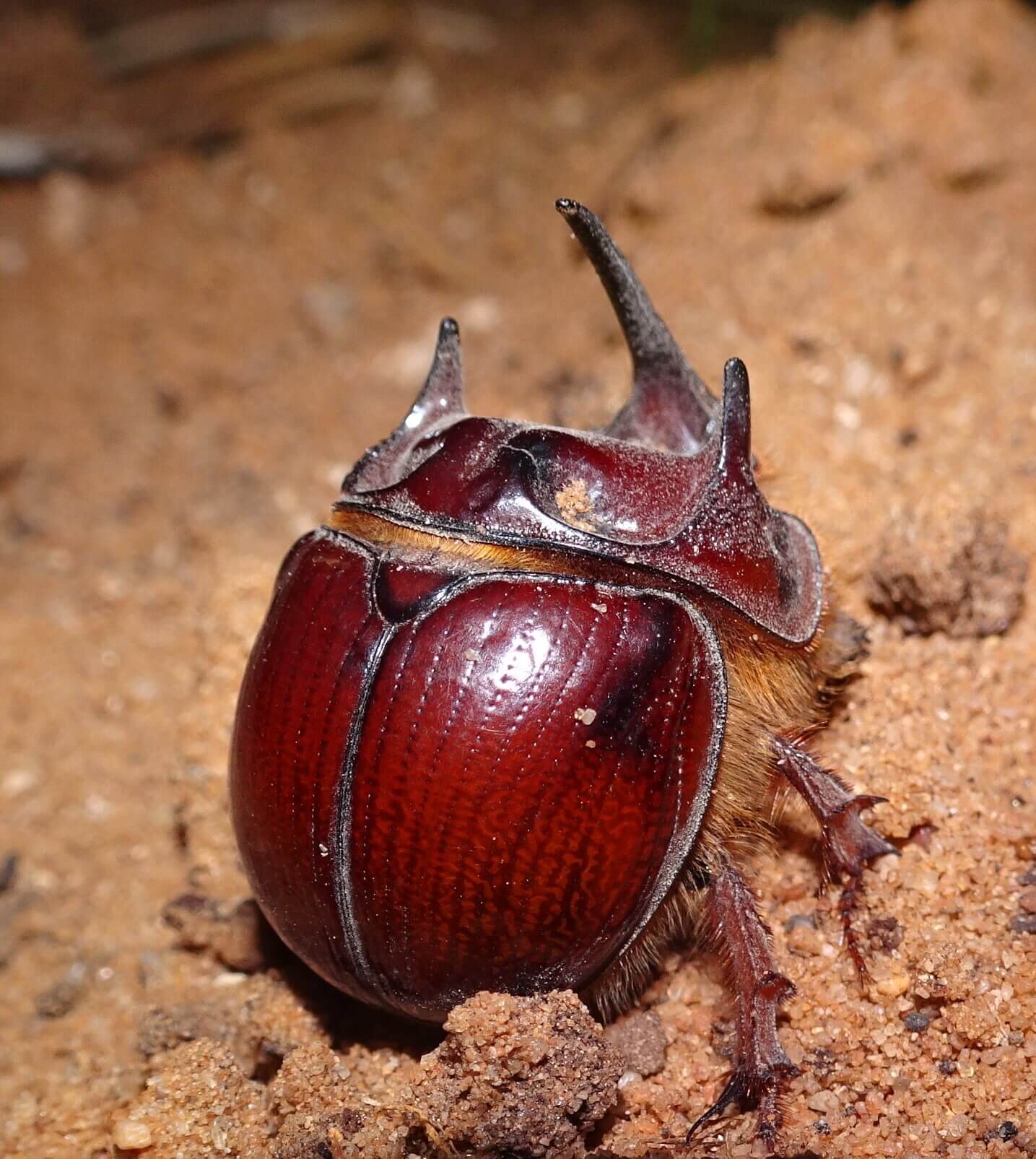Sand turd beetles
Throughout winter and spring, including right now, the sand turds are everywhere in the Mallee. Many years ago now, an entomologist solved the amazing “Who dunnit” mystery for us.
“Geotrupids, he said. “Sand turd beetles.” (thanks Fabian Douglas!)
That was enough for me until this year when I started wondering what do these beetles look like? And how do they create those enormous turds?
A couple of weeks ago, this amazing beetle came to visit. With a face only a mother could love, bulbous antennae and horns! Fabian confirmed this was an earth-borer beetle (Bolboceratidae) and agreed with fellow entomologist Allen Sundholm, that this was probably a Blackburnium species. (I had no idea the taxonomy was so tricky, apparently I should have kept this guy for microscopic examination!).
This beetle is one of the culprits responsible for the sand turds.
In a fairly recent taxonomic revision, the Bolboceratidae were separated from the Geotrupidae and struck out as their own family. Bolboceratidae includes about 40 genera and 400 species worldwide, with Australia the richest in species (Yay us!).
They are absolutely fascinating! Those sand turds are created from below, with the beetle pushing up columns of damp sand out of the ground, like toothpaste from a tube. When the columns fall over, this creates the sand turds.
The Bolboceratids feed on, and have been linked to spreading, mycorrhizal fungi (the good fungi which help native plants obtain food from our poor soils). They live in vertical tunnels up to 2 metres in depth and are only seen above-ground rarely, mostly at dusk.
The life-history is poorly known but in some species, the females produce just one, gigantic egg, weighing in at half the mass of the female. The egg is deposited in a brood chamber sometimes filled with humus, where the larvae develop. The beetles are thought to be long-lived.
Long live the Bolboceratids, I say!
First published 5 November 2020
More information:
Western Australian Museum fact sheet: http://museum.wa.gov.au/sites/default/files/Earth-borer%20Beetles.pdf
A detailed account of Earth boring beetles by someone who has clearly dug up an few: https://www.mapress.com/zootaxa/2007f/zt01499p059.pdf (You know how I love a common name? This paper says: “If a common name is needed, we suggest a term sometimes used in Western Australia: “musician beetles,” named for their ability to stridulate [make a shrill, creaking sound] when disturbed. Some large species can be heard for some distance when collected; occasionally one can be heard “complaining” when disturbed by a straw shoved into its burrow.”)






